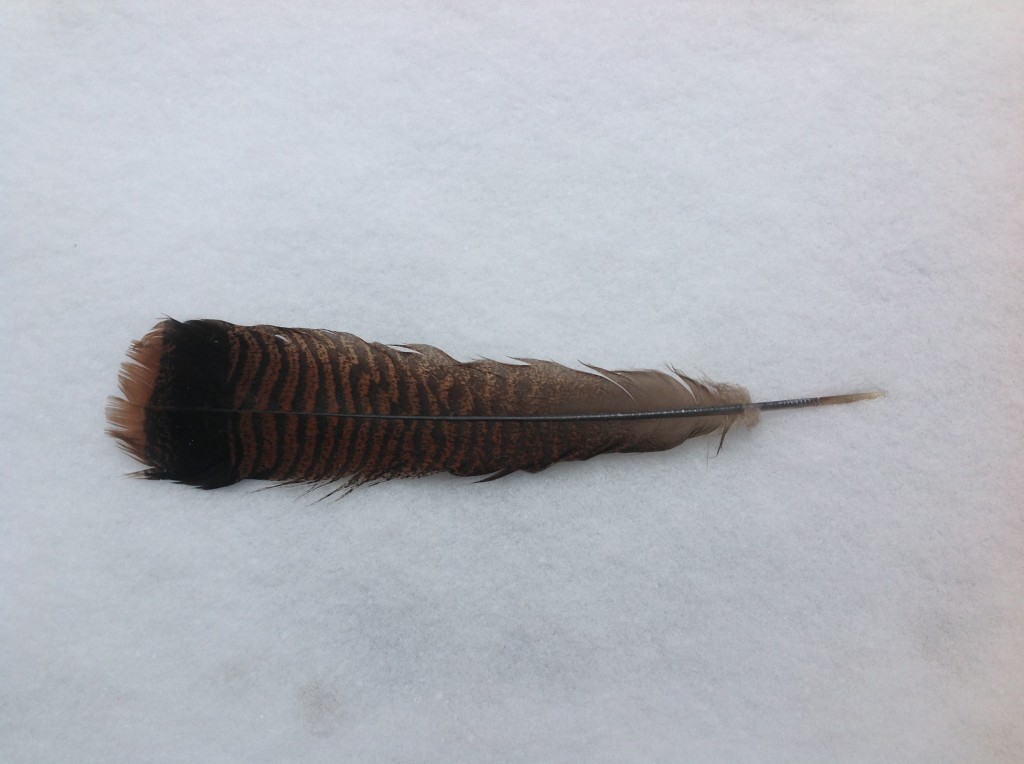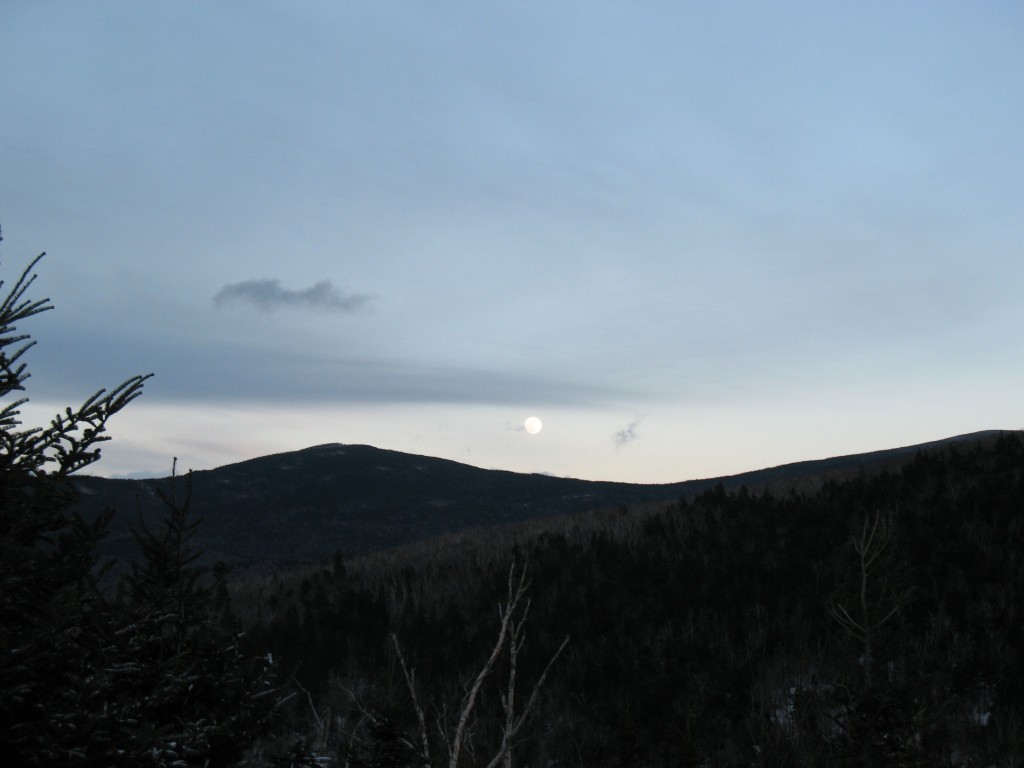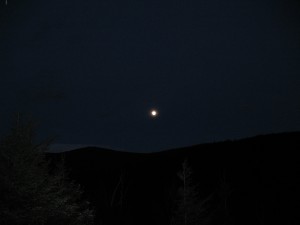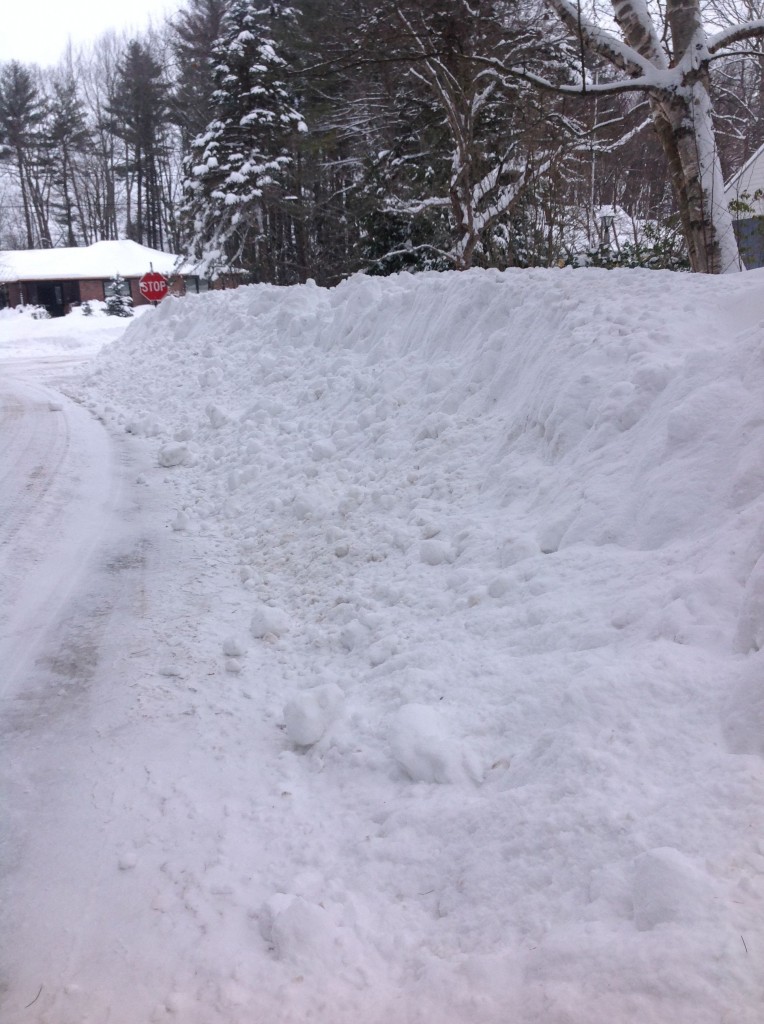Whenever and wherever I walk I keep an eye out for feathers, though I will say that during blueberry time, I see only those of the blue jay; then, all awareness is aimed at discovery of blue. Many of our birds don’t wear gaudy coats, and so whatever they shed as they fly or flurry is some shade of brown or gray. And so, not easily seen. Until you begin seeing them; then, they turn out to be everywhere. Or at least in many places.
In midstate New Hampshire, where we go to find mountains, we keep a glass of found feathers. Over the years, visitors have also added to this clutch, until the glass has become a sort of aviary, or record of one. But none of us has Sibley-like ability to identify all the former owners of these feathers. Yes, there are the unmistakable – we think – yellow and brown of the cedar waxwing, the ubiquitous jay, and, of course, the flashy cardinal. And the wild turkey, which at times dominates a nearby upper pasture in big flocks, scatters its distinctive feathers liberally, though watching a turkey struggle to be airborne, one would think it had no feathers to spare. At one time, I wanted to gather a small book, a book of feathers, that would help walkers identify the birds who left these feathers on the ground. An artist friend would draw each feather, and we would figure out to which bird it should be reattached, offering a short paragraph and picture of the bird. I’ve settled for our glass record of flight instead.
But many of the solitaries in the glass, (some large flight feathers from hawks or owls I like to think), draw attention not for their former owners’ (imagined) names, but instead for the winter flower they form together. There, curving up and out from their wine glass, is reminder, flower of flight, in the midst of this cold season when we often feel grounded. And in all seasons, these feathers are record of attention as we walk, little findings that draw us deeper into both walk and world. Another sort of flight.





